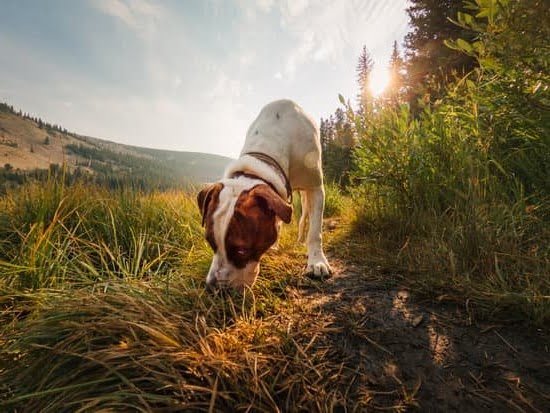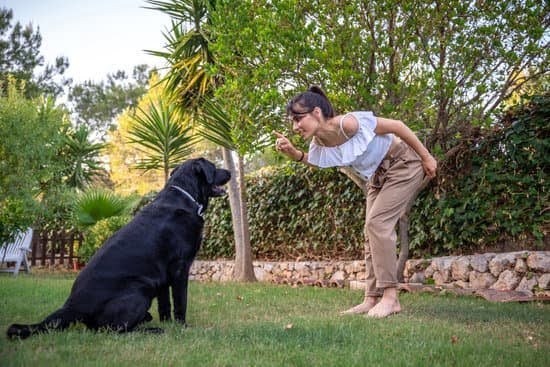The first crucial question many dog owners ask is whether a two-year-old dog can still be trained. Training a dog requires time, effort, and patience, but the age of the dog plays a significant role in determining its trainability. In this article, we will explore the age factor in dog training and specifically address the question of whether a two-year-old dog can be trained effectively.
We will delve into the developmental stages of dogs during their first two years, discuss the importance of early training, and debunk common myths about training older dogs. Additionally, we will highlight the benefits and challenges of training a two-year-old dog and provide key training techniques to help you successfully train your furry friend.
By the end of this article, you will have a better understanding of how age impacts training and gain practical insights to train your own two-year-old canine companion.
Understanding the Developmental Stages of Dogs
Understanding the developmental stages that dogs go through in their first two years is vital when it comes to training them. Just like humans, dogs go through various stages of development as they grow from puppies into adults. During this time, their behavior and cognitive abilities undergo significant changes. By understanding these stages, dog owners can set realistic expectations for training and tailor their approach accordingly.
From birth to around four weeks old, a puppy relies heavily on its mother for survival and does not yet have the capacity to learn basic commands or behaviors. However, from four to seven weeks old, puppies start to explore their surroundings and interact with littermates and humans. This is an important period for socialization, as exposure to various sights, sounds, and experiences will shape the puppy’s behavior later in life.
Between seven weeks and four months old, puppies enter what is known as the “primary socialization period.” During this stage, they are highly receptive and curious about the world around them. They begin learning basic manners, housebreaking skills, and responding to simple commands like “sit” or “stay”.
From four months to one year old, puppies enter adolescence. This is a challenging stage characterized by a surge in energy levels and an increased desire for independence. It is during this time that many dogs may exhibit rebellious or stubborn behavior. Consistent training methods with positive reinforcement are crucial during this phase to establish good behaviors and prevent bad habits from forming.
Finally, from one year to adulthood at around two years old, dogs continue developing mentally and physically but at a slower pace than before. They start reaching maturity both mentally and physically, making it an ideal time for formal obedience training.
Understanding these developmental stages allows dog owners to have realistic expectations about what their two-year-old dog can achieve in terms of training. While they may not be as easily molded as a young puppy still in its formative years, two-year-old dogs can still learn new behaviors and break bad habits.
Patience, consistency, and positive reinforcement techniques are key to successfully training older dogs. By taking the time to understand and work with their dog’s developmental stage, owners can set their furry companions up for success in their training journey.
The Importance of Early Training
Training a dog is an essential part of owning and caring for a pet. It provides them with structure, discipline, and helps to establish a strong bond between the owner and the dog. One important factor that often comes up in discussions about dog training is age. Many people wonder if it is possible to train a two-year-old dog effectively or if it is too late to start.
In order to understand the importance of early training, it is crucial to consider the developmental stages of dogs in their first two years of life. From birth until around two years old, puppies go through critical periods of growth and development. During these stages, they are highly receptive to learning new behaviors, socializing with other dogs and humans, and adapting to their environment. This is why starting training at a young age is so crucial.
One common misconception regarding dog training is that puppies are easier to train than adult dogs. While it may be true that puppies tend to learn faster due to their heightened receptivity during their developmental stages, adult dogs can also be trained successfully with patience and consistency. The key difference lies in the fact that adult dogs may already have learned certain behaviors or developed bad habits that need to be addressed and reversed through proper training techniques.
Challenges of Training a Two Year Old Dog
Training a two-year-old dog can present some unique challenges, particularly when it comes to breaking old habits. By this age, dogs have already developed certain behaviors and routines, which may not align with the desired training goals. However, with patience and consistency, it is possible to overcome these challenges and successfully train a two-year-old dog.
One of the main challenges in training a two-year-old dog is breaking old habits that have already been established. Dogs at this age may have learned certain behaviors through repetition or reinforcement over time, making it more difficult to introduce new commands or change their behavior. For example, a dog that has been allowed to jump on people as a puppy may continue this behavior into adulthood if not properly addressed.
To overcome this challenge, it is important to focus on consistency and positive reinforcement. Reinforcing desired behaviors consistently will help your dog understand that certain actions are rewarded while others are not. It’s also crucial to avoid punishing or scolding your dog for past behaviors as this can create confusion and anxiety. Instead, redirect their attention to more desirable activities and reward them when they engage in those behaviors.
Additionally, providing mental stimulation and engaging in regular exercise can help address behavioral issues caused by boredom or pent-up energy. Interactive toys or puzzle games can keep your dog engaged and mentally stimulated, reducing the chances of them resorting to old habits out of boredom.
Overall, although there may be challenges in training a two-year-old dog due to their ingrained habits, consistent positive reinforcement combined with mental stimulation and exercise can help break these old habits and teach them new behaviors.
| Challenge | Solution |
|---|---|
| Old Habits | Consistency and positive reinforcement |
| Boredom | Mental stimulation and exercise |
Myth Busting
Dogs Are Capable of Learning at Any Age
Contrary to popular belief, age should not be a limiting factor when it comes to dog training. Many people assume that if a dog has reached the age of two, they are too set in their ways and cannot be trained. However, this is simply a myth that needs to be debunked. Dogs are capable of learning new behaviors and commands at any age, including two years old.
Creating New Neural Pathways
One important aspect to consider is that dogs are constantly learning throughout their lives. Training is essentially the process of teaching a dog new behaviors and reinforcing those behaviors through repetition and positive reinforcement. When a two year old dog is introduced to training for the first time, they begin creating new neural pathways in their brain. With consistent practice and reinforcement, these new pathways become stronger and more ingrained over time.
The Power of Positive Reinforcement
Positive reinforcement is an effective technique that can be used to train dogs of any age, including two year olds. This method focuses on rewarding desired behaviors with praise, treats, or other rewards. By using positive reinforcement consistently during training sessions, you can motivate and encourage your older dog to learn new commands and behaviors.
It’s important to remember that consistency is key when using positive reinforcement. Always reward your dog immediately after they exhibit the desired behavior so they can make the connection between the action and the reward. Additionally, keep training sessions short and frequent to prevent your dog from becoming overwhelmed or bored.
By dispelling the myth that age determines a dog’s ability to be trained, we open up opportunities for owners of two year old dogs to instill new skills and correct undesirable behaviors. Through the power of positive reinforcement, consistency in training sessions, and understanding how dogs learn at every stage of life, it becomes clear that any dog – regardless of age – can be trained effectively and successfully.
The Benefits of Training a Two Year Old Dog
While training a two-year-old dog may come with its own set of challenges, there are several benefits that come with training dogs at this age. Two-year-old dogs have reached a level of maturity and focus that can make the training process more efficient and effective.
In this section, we will explore the advantages of training a two-year-old dog and how their maturity and focus play a crucial role in their ability to learn and adapt.
Maturity: A Foundation for Training
At two years old, most dogs have passed through their early developmental stages and have gained a level of emotional and physical maturity. This maturity provides them with a solid foundation upon which to build their training. They have typically outgrown their puppy phase, characterized by constant exploration, high energy levels, and impulsive behavior. Instead, they become more settled and are better able to focus on tasks at hand.
This increased maturity translates to better impulse control, increased attention span, and an improved ability to follow instructions. Since they have experienced different situations in the first two years of their lives, they may also possess valuable skills or basic obedience commands. Training a two-year-old dog allows you to tap into this pre-existing knowledge while building upon it.
Focus: A Sharpened Skill
One significant advantage of training a two-year-old dog is their enhanced ability to concentrate and maintain focus during training sessions compared to puppies or younger dogs. At this age, they have developed better self-control and attentiveness, making it easier for them to comprehend instructions and execute commands accurately.
Additionally, older dogs tend to be more emotionally stable compared to puppies who may still be easily excitable or sensitive to distractions in their environment. Their heightened focus allows for more effective communication between the trainer and the dog.
The combination of maturity and focus creates an ideal learning environment for two-year-old dogs. With these advantages on your side, your dog can quickly grasp new commands and behaviors, leading to a more rewarding training experience for both of you.
Key Training Techniques for Two Year Old Dogs
Positive reinforcement is a crucial training technique for two-year-old dogs. It involves rewarding desired behaviors with treats, praise, or other forms of positive stimuli to encourage the dog to repeat those behaviors. This technique is highly effective because it not only motivates the dog to learn but also strengthens the bond between the dog and their owner.
One key aspect of positive reinforcement training is timing. The reward should be given immediately after the desired behavior occurs, so the dog can make a clear connection between their action and the consequence. For example, if you are teaching your two-year-old dog to sit, you should give them a treat as soon as their bottom touches the ground. This immediate reward helps reinforce the idea that sitting when instructed is a positive behavior.
In addition to treats, verbal praise and physical affection are important components of positive reinforcement training. When your two-year-old dog performs a desired behavior, such as coming when called, it’s important to show enthusiasm and shower them with verbal praise like “good job” or “well done.” Physical affection in the form of petting or gentle hugs can also reinforce good behavior and strengthen the bond between you and your dog.
Using positive reinforcement techniques not only makes training more enjoyable for your two-year-old dog but also sets them up for success in future training endeavors. Dogs who are trained using positive methods tend to be more confident, obedient, and eager to please their owners. With consistency and patience, positive reinforcement can transform your older dog’s behavior and improve your overall relationship with them.
Building Trust and Bonding with Your Older Dog
When it comes to training a two-year-old dog, building trust and establishing a strong bond between you and your furry friend is crucial. By using patience and consistency in your training approach, you can create a solid foundation for successful training sessions.
Patience
When working with an older dog, it’s important to remember that they may have developed certain habits or behaviors over time. These habits can be challenging to break, but with patience, you can navigate through them. Take the time to understand your dog’s individual needs and limitations. Avoid rushing the training process as it can lead to frustration for both of you.
One important aspect of patience is recognizing that progress may not happen overnight. Each dog learns at their own pace, so it’s essential to give them the time they need. Celebrate small victories along the way and remain calm when setbacks occur. Your consistent efforts will eventually pay off.
Consistency
Consistency is key in any kind of dog training, but it becomes even more critical when dealing with an older dog. Dogs thrive on routine and predictability, so establishing consistent rules and expectations will help them understand what is expected of them. This means using the same cues or commands consistently and ensuring that everyone in the household follows these guidelines.
In addition to verbal cues, consistency also extends to your body language and tone of voice. Dogs are observant creatures, so make sure your non-verbal communication aligns with the message you want to convey during training sessions.
By maintaining a patient and consistent approach throughout your training journey with a two-year-old dog, you build trust and strengthen your bond with them. Remember that every interaction is an opportunity for learning and growth, both for yourself as a trainer and for your beloved canine companion. With time, dedication, and perseverance, you can achieve remarkable results in training your older dog.
Success Stories
When it comes to training a two year old dog, there are countless success stories from dog owners who have taken on the challenge and achieved remarkable results. These success stories provide valuable insight into what is possible when working with an older dog and serve as inspiration for those considering training their own furry friend.
One such success story is that of Sarah and her two year old Labrador Retriever, Max. Sarah adopted Max from a rescue organization and quickly realized that he had never received any formal training. Despite his age, Sarah was determined to train Max and give him the skills he needed to thrive in his new home.
With patience, consistency, and positive reinforcement techniques, Sarah focused on teaching Max basic obedience commands such as sit, stay, and come. She started with short training sessions using treats as rewards, gradually increasing the difficulty level as Max began to understand what was expected of him. Within a few months, Max became a well-behaved member of Sarah’s family, proving that even at two years old, dogs can learn new tricks.
Another inspiring success story is that of Mark and his two year old Border Collie mix, Bella. Mark had rescued Bella from an abusive situation where she had never experienced any form of training or socialization. Despite her difficult past, Mark saw potential in Bella and was determined to help her overcome her behavioral issues.
Mark started by building trust with Bella through positive reinforcement techniques such as clicker training. He focused on rewarding desired behaviors while ignoring unwanted ones. Through consistent training sessions every day along with plenty of love and patience, Bella started to transform into a well-behaved companion.
These success stories show that with the right approach and dedication from both owner and dog, a two year old dog can indeed be trained effectively. It may require extra effort compared to starting at a younger age but is far from impossible. The experiences of dog owners like Sarah and Mark highlight the importance of patience, consistency, and positive reinforcement when training older dogs, allowing them to develop new skills and behaviors that improve their overall quality of life.
Conclusion
In conclusion, the age of a dog should not be seen as a barrier to training. Despite the challenges that come with training a two-year-old dog, it is absolutely possible to teach them new skills and behaviors. While it may be easier to train a puppy, due to their greater adaptability and rapid learning ability during their developmental stages, older dogs can still learn and improve their behavior through consistent training techniques.
It is important to remember that age is just a number in dog training. While it may take more time and patience to break old habits and establish new ones in an older dog, they also possess certain advantages over younger dogs.
Two-year-old dogs are often more mature and have longer attention spans, making them better able to focus on the training process. Their ability to grasp commands quickly enables them to progress at a faster pace than puppies.
Positive reinforcement is key when training two-year-old dogs. Reward-based techniques using treats or verbal praise can motivate them to learn new behaviors and reinforce positive actions. Building trust and bonding with your older dog is also crucial for effective training. Patience, consistency, and understanding are vital traits for any owner seeking to train their two-year-old dog successfully.
There have been numerous success stories of owners who have trained their two-year-old dogs successfully. These real-life experiences highlight the fact that with dedication and proper techniques, any dog can be trained regardless of their age. So if you have a two-year-old dog who needs some training, don’t give up hope. With the right approach and commitment from both you and your furry companion, you can achieve great results together.
Frequently Asked Questions
Is it harder to train a 2 year old dog?
Training a 2-year-old dog can pose certain challenges compared to training a younger puppy. At this age, dogs may have already developed some established habits and behaviors which can take more time and effort to modify.
Additionally, older dogs tend to have a lower drive for learning as they may possess a stronger sense of independence and self-assuredness. However, with patience, consistency, and appropriate training techniques, it is definitely possible to train a 2-year-old dog.
Can you start training a 2 year old dog?
Absolutely! Dogs are capable of learning at any age, and starting training with a 2-year-old dog can be highly beneficial.
While it may require more time and patience compared to training a younger puppy, the principles of positive reinforcement and consistent practice still apply. The key is to adapt the training techniques to suit the dog’s individual needs and preferences while building on their existing knowledge base.
How long should it take to train a 2 year old dog?
The time required to train a 2-year-old dog will vary depending on several factors such as the individual dog’s temperament, previous training experiences (if any), and the specific behaviors being targeted for modification or learning. It is important not to rush the process as each dog learns at its own pace.
Generally speaking, basic obedience commands can be taught within a few weeks of consistent training sessions while more advanced skills may take several months or longer to fully develop. Ultimately, successful training hinges on regular practice, positive reinforcement, and clear communication between the trainer and the dog.

Welcome to the blog! I am a professional dog trainer and have been working with dogs for many years. In this blog, I will be discussing various topics related to dog training, including tips, tricks, and advice. I hope you find this information helpful and informative. Thanks for reading!





